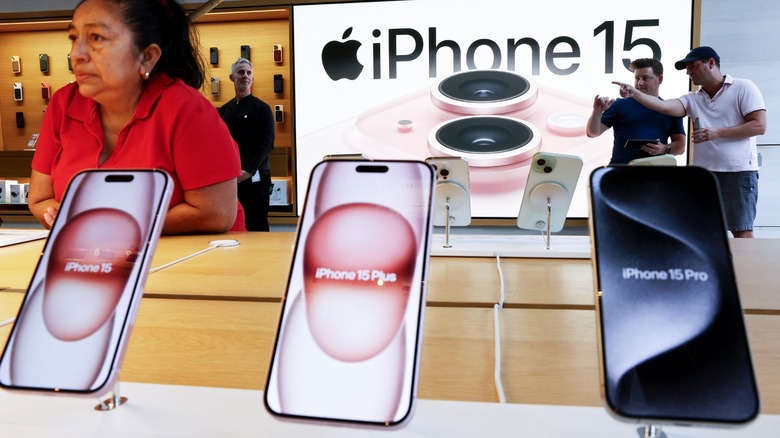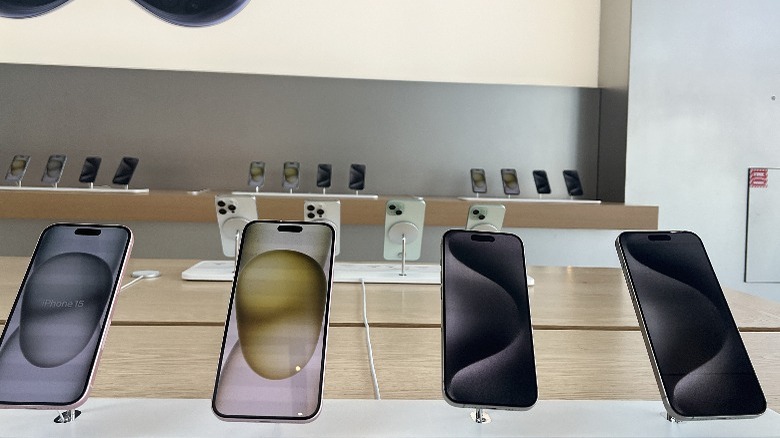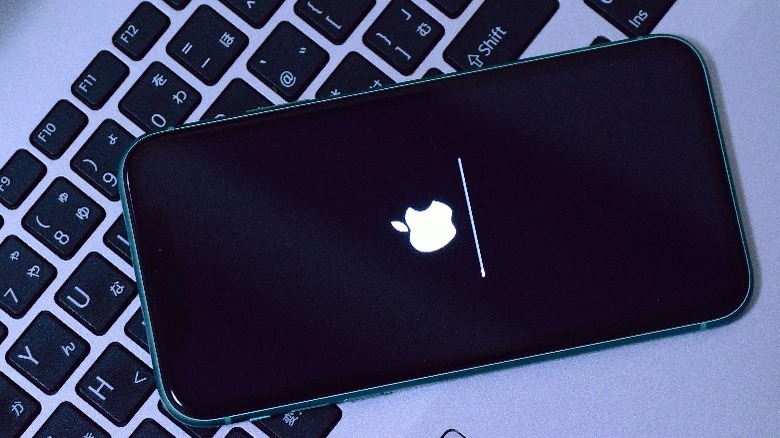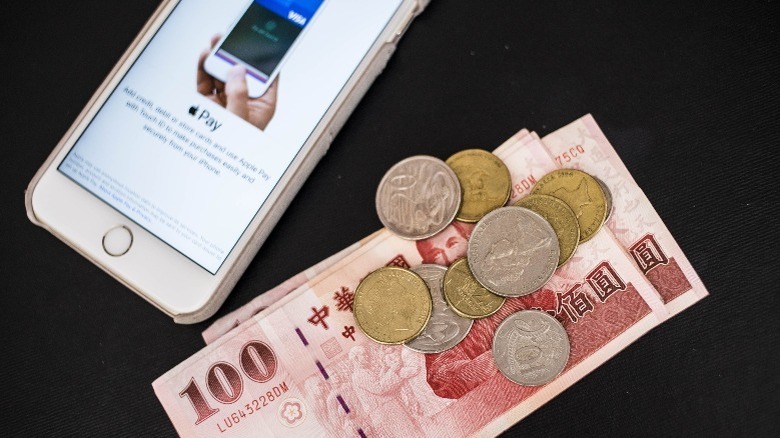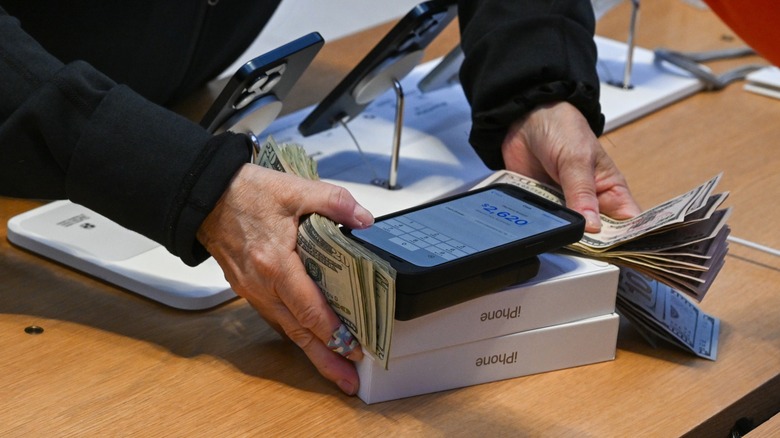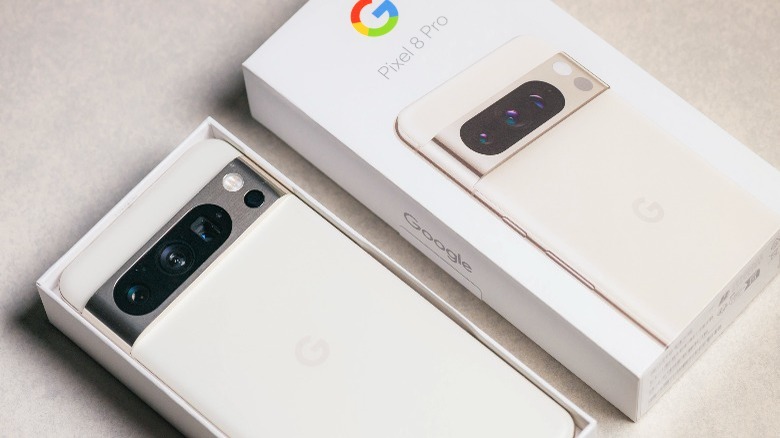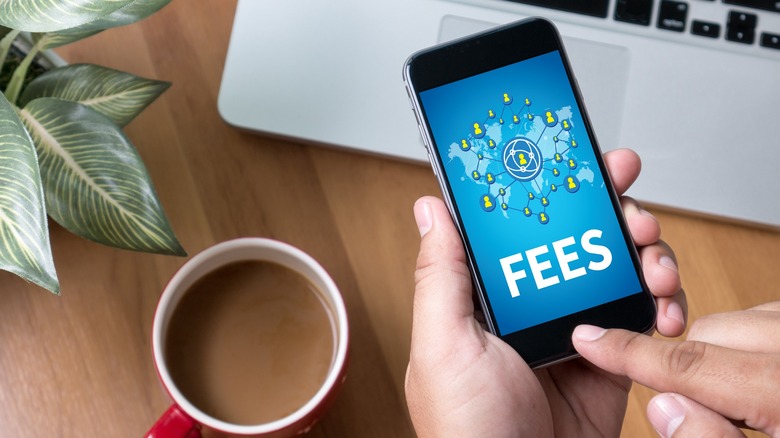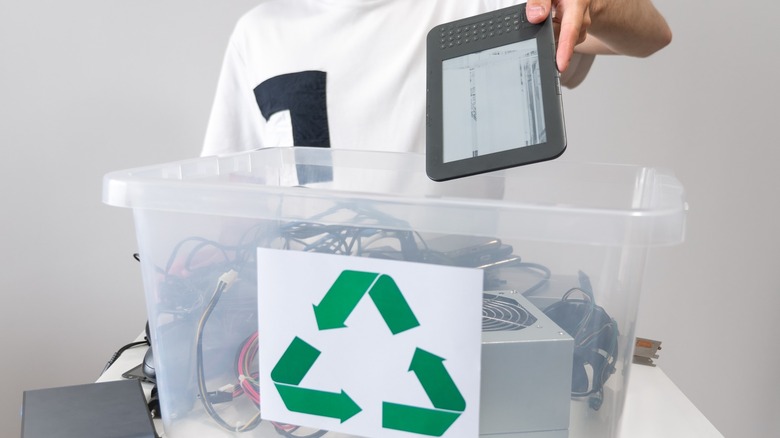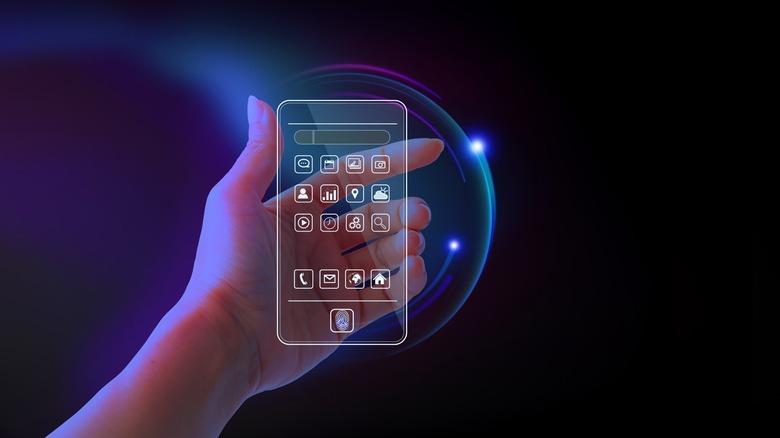10 Reasons You Don't Need The Newest iPhone, Yet
It's become a tradition for Apple to release at least one iPhone model every year at its WWDC event. In 2017, we even saw two major releases with the iPhone 8 and the iPhone X. Apple markets each new model so well that there's always a lot of hype surrounding every drop. So much so that you may start to feel like your current iPhone is outdated, creating a sense of urgency to switch to the newest model when it's released.
It is easy to fall into this pattern year after year, but before you walk into the Apple store, there's a lot to think about. These days, getting the top-of-the-line iPhone will cost you a pretty penny, and for a lot of iPhone users, an upgrade might not even be necessary. With that said, here are a handful of reasons why you don't need the latest iPhone right now.
Minor upgrades with each model
How many times has Apple actually released a noteworthy feature in a new iPhone? These days, almost every new model seems like only a slight upgrade from the previous one, rather than offering a whole new experience. In fact, when we reviewed the iPhone 14, it seemed very similar to the iPhone 13 — the phones shared the same A15 Bionic chip, with the only difference being an extra core in the GPU. They also had the same camera system and visual design. Another instance of a repetitive design was with the iPhone 7 and 8, though the iPhone 8 was made with slightly different materials. While there are some changes with every new iPhone model, it feels like new features and additions are increasingly subtle.
During the launch, you'll probably hear that a particular upgrade will change the way you use your phone. But the truth is most differences are hardly noticeable to the average user. This begs the question: Is it worth upgrading if you're getting almost the same experience as your current phone? If you're looking for a significant change, you might want to hold off a couple of generations before upgrading.
Longevity of software support
If you're not using the latest version of iOS, you're missing out on a lot. Your iPhone's software — the iOS operating system — is responsible for many of the features that make getting a new phone so exciting. And software updates are a big part of what keeps iPhones functional for so long. They not only introduce new features but also contain patches that address glitches, bugs, and security vulnerabilities that may pop up from time to time. So, if your phone is still supported, you'll get a lot of the features of the newest iPhone simply from software updates, for free.
Luckily, iPhones usually receive software updates for about 5 to 6 years after launch. For example, the iPhone XR was released in 2018, and it's still compatible with iOS 17, which came out in 2023. This extended support means you don't have to buy the latest iPhone to enjoy the latest software features, you just need to regularly update the iPhone you probably already have. However, it is also worth noting that some software features are only compatible with specific hardware. For instance, only iPhones that have the dynamic island can use its interactive features that come with iOS 17.
You can get a bargain on slightly older models
If you check out an Apple store, the latest iPhones usually cost more than previous models, even though it probably isn't that different when it comes down to it. That means there's even more upside to buying an older model. Usually, when a new iPhone is released, Apple reduces the prices of the older models available on its website and in stores by about $100. So rather than going straight for the newest iPhone, consider the model before it — you may get a lot more bang for your buck and still nab almost all those shiny new features.
Another option is one of Apple's hidden treasures, its Certified Refurbished Store. When devices are returned, they undergo a thorough refurbishment process. Any faulty parts are replaced and tested, and the outer shell and battery are replaced as well — you pretty much get a brand-new iPhone for a fairer price. You can also consider a used phone from third-party platforms like eBay and Amazon. However, before buying a used phone, it is important to research and verify the seller and device.
The reward no longer justifies the cost
It's no secret that iPhones are quite expensive. Years ago, this wasn't much of an issue because each model was actually a notable improvement from the last. Nevertheless, there has been a steady rise in the prices of iPhones over the last couple of years, especially with the introduction of the Pro models. Currently, the prices of iPhones are at a point where they are difficult to justify for the average consumer.
The iPhone 6 launched with a price tag of $199, but with the iPhone 7, we saw a price increase of over $649. There was also a similar price hike with the iPhone 8 versus the iPhone X. Sure, night-mode photography and general performance were slightly better, but was it worth the $300 price jump? Today, if you want the top-of-the-line model, you'd be spending at least $1199, which is a lot of money for a phone — especially when the iPhone 13 currently starts at $599, and still offers great battery life, performance, and camera quality.
Your phone probably still works great
iPhones are built to last, not only because of the longevity of software support, but also due to their long-lasting performance, reliable battery life, and resilient industrial design — models like the iPhone 11 Pro Max were incredibly durable. If you've bought one in the last couple of years, chances are it's still more than capable of handling your day-to-day needs. With proper maintenance and regular software updates, you should be able to use your phone for a few years.
But like all phones, years of use will cause your battery to degrade. Apple says the battery on the latest iPhones can last for up to 1000 cycles before it needs a replacement. So rather than shelling out all that money for a new model, an easier solution might be a simple battery replacement. If your phone has no other serious hardware issues, you're probably better off sticking with it — a battery replacement will allow you to squeeze out a year or two more of use.
Better flagship offers from competitors
It's always a good idea to consider other options before making a final decision on a purchase, especially when it comes to something as important to your daily life as a smartphone. Though Apple makes some of the best smartphones, there's stiff competition in the smartphone market.
Many Android devices can do things iPhones can't, and they often implement shared features just as well. For example, Androids usually charge faster than iPhones because Apple uses optimized charging to increase the battery life. And speaking of innovation, Apple competitor Samsung is staying ahead of the game with features like a folding display on the Galaxy Z Flip and stylus integration in its flagship phones. Androids also offer more freedom for customization and they work better with devices outside their OS. Apple is also pretty slow at incorporating new features, so if you notice a feature you like on an Android flagship you may have to wait a couple of models before it reaches the iPhone.
Hidden costs
While a brand-new model might be advertised at a certain price, there are a few hidden costs you should consider before buying that new iPhone.
The phone might start at $999 (excluding tax), but that doesn't include the added storage space you might need. To increase the storage capacity of an iPhone 15 Pro, you can spend up to an additional $500 (and even one step up from the default will run you $100). Another thing to bear in mind is having to get all new accessories, like screen protectors and phone cases, since any ones you have might not be compatible with your new phone. This is especially important given Apple finally switched to USB-C for the iPhone 15 and 15 Pro series. Another thing you might want to consider is the cost of AppleCare, which will run you an additional $79 to $269, depending on your plan and iPhone model.
The 'wait and see' approach
It's always smarter to wait a couple of weeks (or even months), before hopping on the bandwagon of the latest iPhone. The first wave of buyers always has to deal with the first wave of any software or hardware problems that developers didn't catch during the testing phase. While software bugs can usually be fixed with an update, problems with a new iPhone's hardware could lead to a recall of all the defective devices.
Hardware issues have led to some controversies surrounding new Apple releases — "Antennagate" and "Bendgate" are particularly notorious. With Antennagate, the iPhone 4 had issues with its cell signal when held in a certain way. Bendgate referred to a design flaw in the iPhone 6 Plus that made the phone prone to, well, bending under not very much pressure. More recently, early buyers of the iPhone 14 Pro reported that the iPhone's battery was draining a lot faster than previous iPhones. Although Apple eventually resolves most of these problems, giving a new iPhone a few months in the wild before you buy it will help you avoid getting caught up in any serious problems.
Sustainability and environmental impact
It's more important than ever to consider the long-term effects of our actions on the environment, and that includes our purchases. E-waste is a growing concern among climate scientists. According to the UN, a staggering 62 million tons of e-waste was produced in 2022. E-waste isn't limited to our devices — it includes chargers and other electronic accessories.
Another overlooked aspect that negatively impacts the environment is the process of manufacturing and shipping a new device. The mining of the raw materials needed to manufacture the phone is detrimental to the environment, as is the manufacturing process itself. Also, the transportation of materials and finished products between factories, across continents, and finally to your doorstep creates a significant carbon footprint.
While Apple has made efforts to be sustainable in its entire development, manufacturing, and transportation process, by extending your current iPhone's life, you'll be directly contributing to curbing the growing e-waste problem.
Future innovations
Apple is known for being slower to adopt the latest cutting-edge technology. Competitors adopted features like fingerprint recognition, a smaller notch, and a higher refresh rate long before Apple implemented them. Many argue that though Apple does things later, it always gets it right, and often does it better than the companies that implemented these features first. Whatever the case may be, there's a lot to look forward to when it comes to innovative developments with the iPhone. There are always rumors floating around about what Apple has up its sleeve, like in-display fingerprint sensors and folding displays.
So, while it might be tempting to upgrade to the newest iPhone — especially when there's a new release — if you wait until one of those big features is actually out, the reward will be that much sweeter. It might feel like you're playing a waiting game, but chances are, if you hold off for a couple of years before you upgrade, there'll be a significant upgrade that will make dropping all that money worth it.
